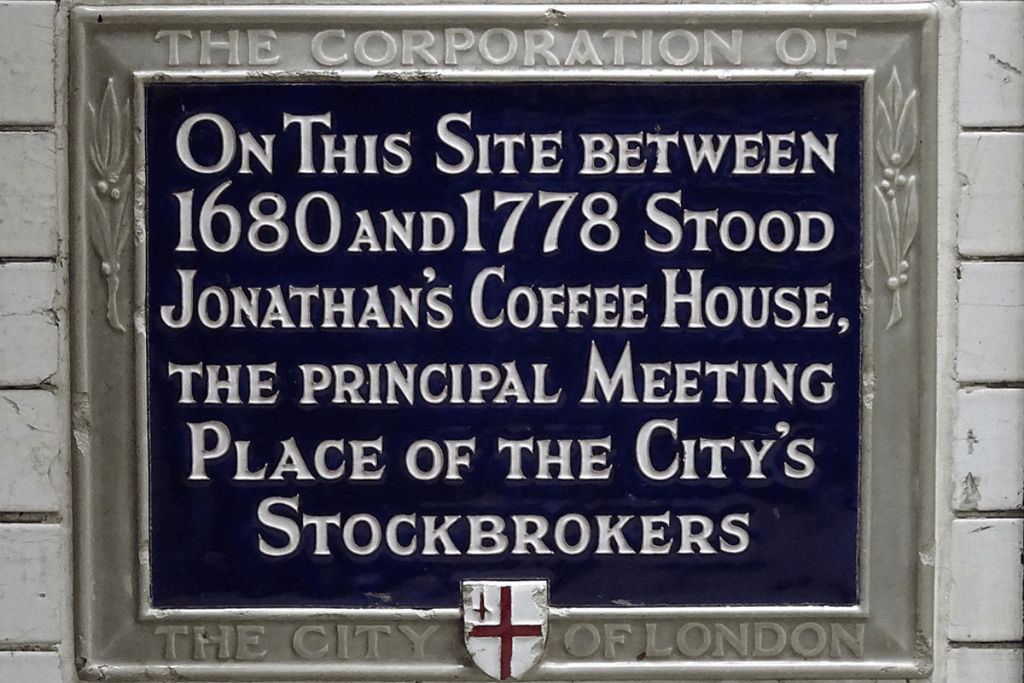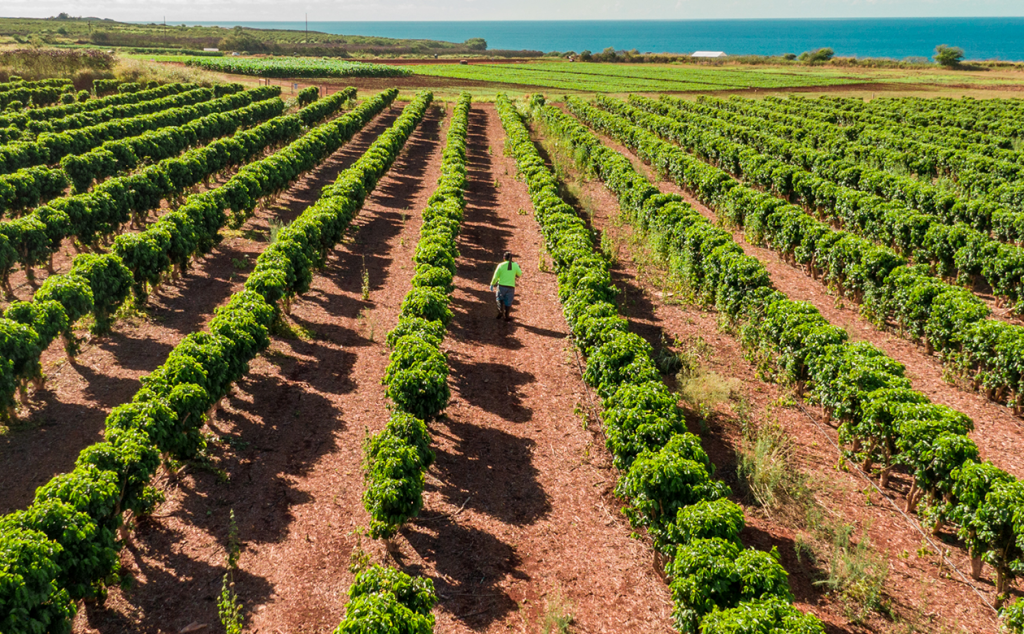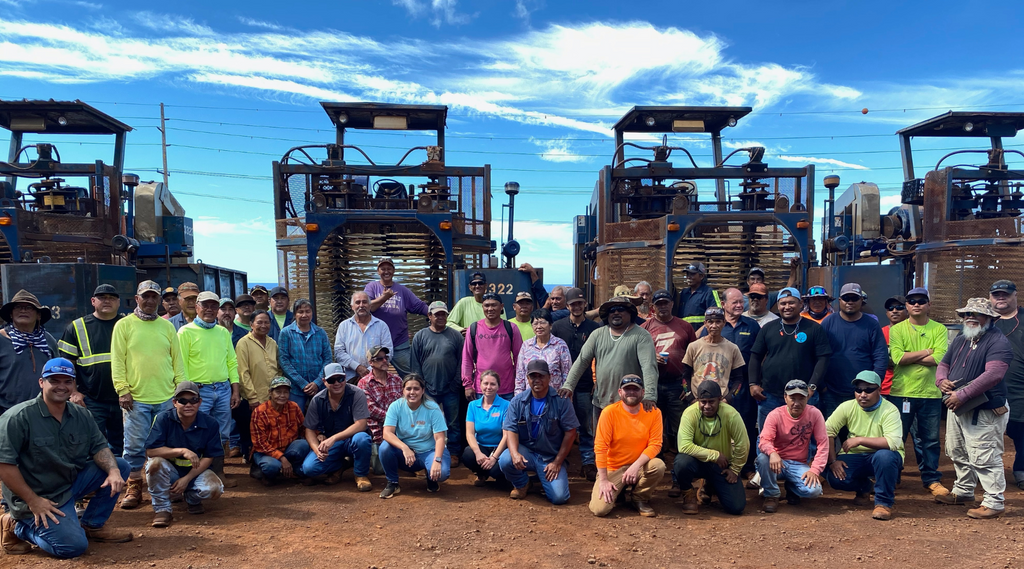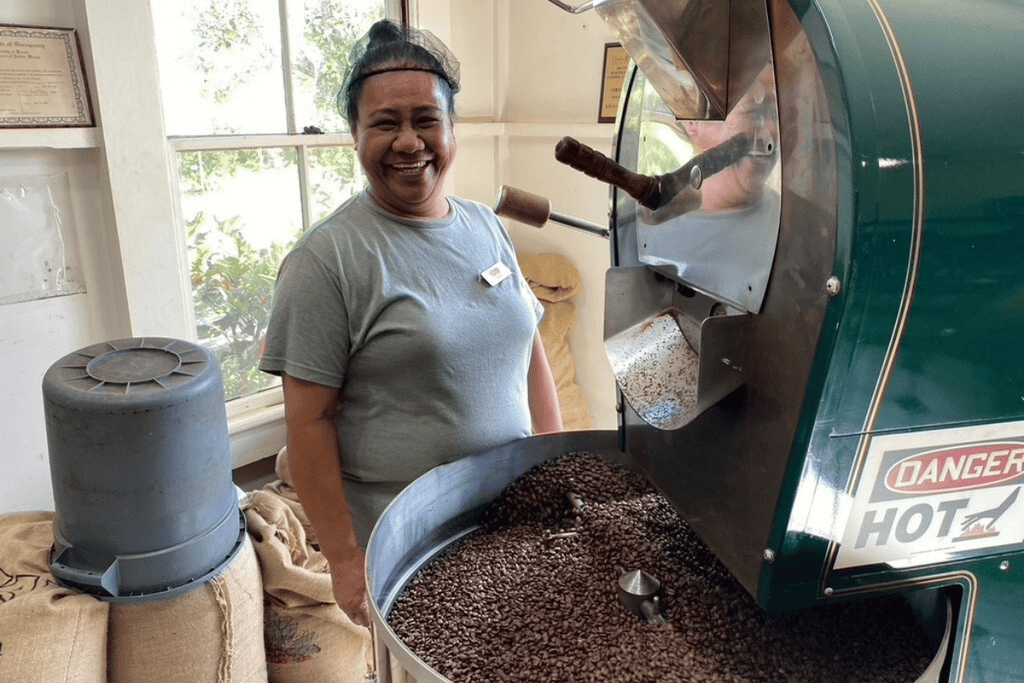
Where Did Coffee Come From? (and how did it end up in Hawaii?)
From the legendary highlands of Ethiopia to the lush valleys of Hawaii, coffee has embarked on a global journey as rich and complex as the brew itself. Hawaiian coffee is a rare gem in the world of java and the result of a grand global voyage. In this guide, we'll share where coffee came from, how it arrived in Hawaii, and what makes Kauai Coffee so special today. It is a tale that spans centuries and continents, taking root in diverse cultures and growing economies. So, pour a cup and settle in for an epic tale that starts with a few small seeds.

Legendary Origins: Ethiopia & Africa
The coffee saga begins in Ethiopia, the birthplace of Coffea arabica. It's said that coffee was first discovered in the 9th century by an Ethiopian shepherd named Kaldi, who noticed the energizing effect the red coffee cherries had on his goats. He shared this discovery with a monk, who created a drink from the berries that kept him awake all night. Thus, the first cup of coffee came into being.
From these mystical and mysterious beginnings, coffee spread across Ethiopia and into neighboring countries, each developing its unique coffee culture. In Ethiopia, varietals like Yirgacheffe, Sidamo, and Harrar are still celebrated for their diverse and complex profiles, ranging from floral to winey to fruity. Sudan and Kenya embraced coffee with similar zeal, cultivating varietals still sought after for their distinctive tastes today.

View of Mocha during the second half of the 17th century. Olfert Dapper, Public domain, via Wikimedia Commons
Coffee on the Arabian Peninsula
As coffee consumption became ritualized in Ethiopia, its fame spread to the Arabian Peninsula, where it found a new home in Yemen. By the 15th century, the city of Mocha in Yemen had become the heart of the coffee trade, spreading beans across the Islamic world and into Europe. Here, the English and Dutch East India companies first traded coffee systematically and it became a part of daily life, with the first coffee houses, known as kaveh kanes, appearing.
These coffee houses played a pivotal role in the cultural and social life of the times, much like the European cafes would do centuries later. They became hubs for intellectual discussion and were sometimes dubbed 'Schools of the Wise' for the spirited conversations that took place within their walls.

Coffee in South America
Coffee made an illicit voyage to South America in the 16th century. The story goes that a Brazilian diplomat, Francisco de Mello Palheta, was sent to French Guiana to obtain coffee seedlings. The governor refused, but his wife, captivated by Palheta's charm, secretly gave him a bouquet laced with coffee seedlings, which he took back to Brazil.
These seedlings thrived in the South American soil and climate, and Brazil became a powerhouse in coffee production. Varietals such as Bourbon and Typica, are now the backbone of the coffee industry, known for their sweet, rich, and mellow profiles.

Spudgun67, CC BY-SA 4.0, via Wikimedia Commons
The Beginning of Coffee Culture in Europe
When coffee arrived in Europe in the 17th century, it created a stir that resonated through the continent's social and cultural fabric. Venice's coffee houses opened the door to a burgeoning coffee culture quickly spreading across the continent. London's coffee houses became such centers of commerce that they gave rise to financial institutions like Lloyd's of London.
Historical figures such as Johann Sebastian Bach and Voltaire were known coffee lovers, with Voltaire rumored to consume 40-50 cups per day. Coffee's influence on European culture was immense, paving the way for the Enlightenment and forever altering the continent's social landscape.

The Journey to Hawaii
The tale of coffee's arrival in Hawaii is filled with unexpected events and intriguing characters and could easily be the plot of a blockbuster movie. A Spanish seafarer named Don Francisco de Paula Marin landed on the Hawaiian Islands in the late 18th century and became a trusted advisor and interpreter to King Kamehameha I.
Marin was reputed to be a charismatic individual and skilled botanist who maintained connections with notable pirates of his time, enabling him to acquire seeds and plant cuttings of various crops. Coffee, pineapple, mango, cotton, and oranges are among the crops linked to Marin, and he is believed to have sown the first coffee seeds in Honolulu in 1817. Regrettably, the coffee plants did not thrive, and King Kamehameha I died in 1819.
Following King Kamehameha's death, his son Liholiho succeeded him, becoming King Kamehameha II. In November 1823, King Kamehameha II embarked on a diplomatic journey from Oahu to England, intending to request King George IV establish an alliance with the Hawaiian Kingdom to safeguard against Russian influence in Hawaii.

Unfortunately, the mission took a sorrowful turn when King Kamehameha II and his wife, Kamamalu, fell ill with measles and passed away in London. With the demise of the Royal Hawaiian pair, Chief Boki, the Royal Governor of Oahu and a member of the delegation that journeyed to England, took over the mission's leadership and laid the groundwork for the introduction and subsequent commercialization of coffee in Hawaii.
Boki was first exposed to coffee and cafes in London and recognized the possibility of growing coffee as a crop in Hawaii. Boki collaborated with British botanist John Wilkinson. They journeyed together on the HMS Blonde back to Hawaii, stopping in Rio de Janeiro, Brazil, to purchase coffee saplings. In 1825, Boki and Wilkinson returned to Hawaii and planted coffee in the Manoa Valley on Oahu that same year. The unique Hawaiian climate, characterized by morning sunshine, afternoon rain, and mineral-rich volcanic soil, proved ideal for coffee cultivation. While coffee was first cultivated commercially on the north shore of Kauai, the coffee industry gained momentum on the Kona Coast of the Big Island.

Hawaiian Coffee Today
Modern Hawaiian coffee continues to be defined by its origin, grown on small to midsized farms and processed with great care to preserve the unique flavors of the origin. Coffee from Hawaii is celebrated for its smooth, rich taste, often with hints of nuts and fruit, which coffee connoisseurs attribute to the islands' unique growing conditions.

Kauai Coffee History
Kauai's Coffee Company began in the 1800s as the McBryde Sugar Company and fully transitioned into coffee production in 1987 when the sugar industry on the island began to wane. The land that Kauai Coffee now occupies was once part of a larger sugar plantation, and the transition to coffee represented a significant agricultural shift. It was a bold move that has paid dividends, helping to make Kauai a relatively new but well respected player in the coffee world.

Kauai Coffee Company Today
Kauai Coffee Company is an authentic Hawaiian coffee estate and Hawaii's largest coffee grower. We have been recognized as the Best Coffee Grower in Hawaii for nearly a decade in the HAWAII Magazine Readers' Choice Awards. We care for over 4 million coffee trees on 3,100 acres, making us the largest coffee grower in the United States, too.
From growing the coffee to roasting and packaging, we employ sustainable, environmentally sound practices throughout every step of the process. Our 100% Kauai Coffee products are triple certified by leading sustainability advocates, including Fair Trade USA, The Rainforest Alliance, and the Non-GMO Project. Our unique structure allows for a complete, seed-to-the-cup experience that's rare in the coffee industry. Our Visitor Center draws coffee lovers from around the world to the estate to taste and learn about high-quality Hawaiian coffee.

Just the Beginning
The story of coffee, from its legendary discovery to its cultivation in the world's various coffee belts, is steeped in history and rich with anecdotes of human ingenuity and cultural exchange.
Its journey to Hawaii, particularly Kauai, is a narrative of adaptation, survival, and success. As you savor a cup of Kauai Coffee, you are not just enjoying a daily ritual; you are participating in a global tradition that spans centuries, and enjoying a product that has been touched by many hands, from ancient Ethiopia to the fertile slopes of Kauai’s South Shore. This is the essence of coffee—a drink of the world, a connector of people, a simple pleasure that is, in fact, not so simple at all. Shop for our complete collection of exceptionally smooth and delicious 100% Kauai Coffees online now.
















